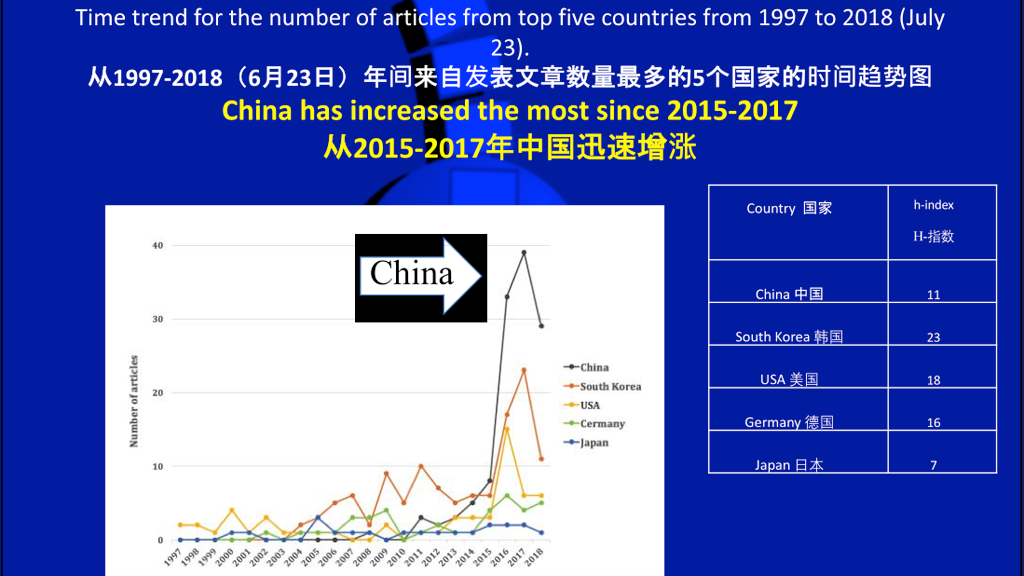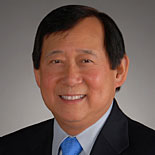2018 Report on Recent Travel and Lectures

I have witnessed the exponential acceleration of interest in endoscopic spine surgery in the past two years, from 2017-2018, especially in Asia. Tremendous interest and growth now comes from China, where Chinese President Xi’s directed economic reform has produced visible changes not only in reports on their military presence, but in Health Care Reform. I have also personally experienced and witnessed the changes and directives in spine care.
Chinese minimally invasive surgical organizations, Chinese medical associations and now even traditional medicine have embraced endoscopic surgery for their members. My concern is if the interest can be accompanied by appropriate training. I have been lecturing on endoscopic spine surgery along with emerging Chinese key opinion leaders of these organizations. Many have come to me for training since 2000. It is truly remarkable to see the progress in minimally invasive surgery in the past few years, and even North America is taking notice.
China, however, has embraced endoscopic spine procedures for the full spectrum of spinal care from discogenic pain to trauma, tumor, and stenosis in the cervical, thoracic and lumbar spine, overtaking Korea and Japan in volume. The leaders in percutaneous endoscopic spine surgery in China have taken on complex problems. Is China, however, ready to take a leadership role in research and development? Korea and Japan, in my opinion, are more aligned with high quality clinical research, but China, with its number of cases and population is poised to expand exponentially in quantity.
I have resisted expanding my own endoscopic experience to other regions of spine care, as endoscopic progress in the lumbar spine is becoming, but may still not yet be, mature. I am gaining steady progress in the treatment of failed back surgery syndrome and endoscopic treatment of various stenosis conditions that can be successfully treated with a high rate of success in an aging spine, especially when indications for endoscopic surgical care is correlated with the patient’s positive response to diagnostic and therapeutic injections using similar trajectories as endoscopic surgical decompression. I have also found a niche in treating young patients where experienced traditional surgeons are hesitant to operate using traditional open techniques.
I began by teaching DiscFX in China, a non-endoscopic percutaneous procedure fluoroscopically-guided as an entry level percutaneous non-visualized procedure. I intended for this percutaneous procedure to transition into visualized surgical pain care for disc herniations, then foraminal stenosis. These surgeons are not transitioning to endoscopically-guided disc herniation. Endoscopic decompression now extends to treatment of foraminal and spinal stenosis as part of the spectrum of endoscopic symptomatic conditions in the lumbar spine. Treatment of “failed back surgery” syndrome is the next step.
My involvement has been mainly in Asia as opposed to North America where the politics and economics of surgical care creates more headwind against the adoption of endoscopic spine surgery. China and Asia, in general, are not as restricted.
China and Asian key opinion leaders throughout Asia are now tackling endoscopic instability, deformity, trauma, tumor, and infectious spondylitis.
My lectures have drawn large audiences and attendance, with hundreds of attendees coming to endoscopic sessions that greatly overshadows the US meetings in comparison. NASS has expanded their efforts to Asia with their EBM and levels of evidence platform, but in many cases, the teachers are behind the students in actual experience.
Growing numbers of interested spine care providers increasingly request coming to Arizona for training, but I am unable to accommodate most requests because I am in the sunset of my career and in private practice. There are, however, opportunities to train with my former fellows who have become accomplished and prominent endoscopic spine surgeons in their home turf, and who will accept visitors and fellows for training.
IITS lifetime members, formed to represent a core of highly qualified, accomplished endoscopic surgeons, are welcome to come to Phoenix for short refresher observation visits. My associates are also performing more endoscopic surgeries, but they all mostly embrace endoscopic procedures that augment their already successful traditional open MIS techniques.
I report on my activities this year, along with pictures that chronicle interesting geographic, tourist, and historic sites in Asia. I encourage those interested to visit DISC at www.sciatica.com and iits.org for updated material.
DOWNLOAD: Full List of 2017-2018 Meetings and Lectures
I have also published numerous articles in open access journals, that are being reviewed by editors who then offer to list selected articles in PubMed. I think highly-rated, prestigious subscription and large spine organization journals are realizing that with the easily accessed internet, the old concept of EBM must change or become less relevant.
The articles that provide updated concepts and results are listed under Publications, on my website under physician information, and selected national and international invited meeting lectures are also provided on YouTube.
I have interesting photos of my travels in Asia and will place selected photos on the IITS.org website AFTER I gather and sort some pictures of interest. I am also considering a small meeting for dedicated and lifetime members to come to Phoenix for updates. Please let me know if there is interest.

